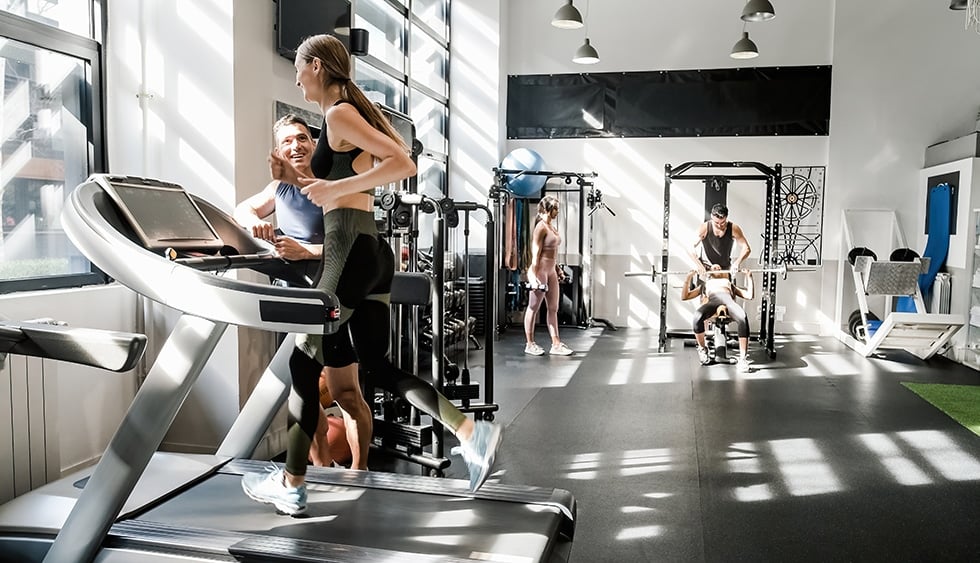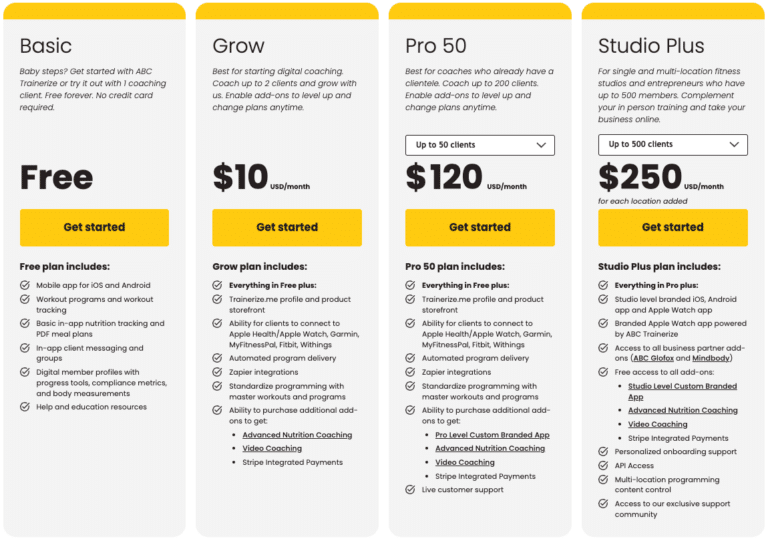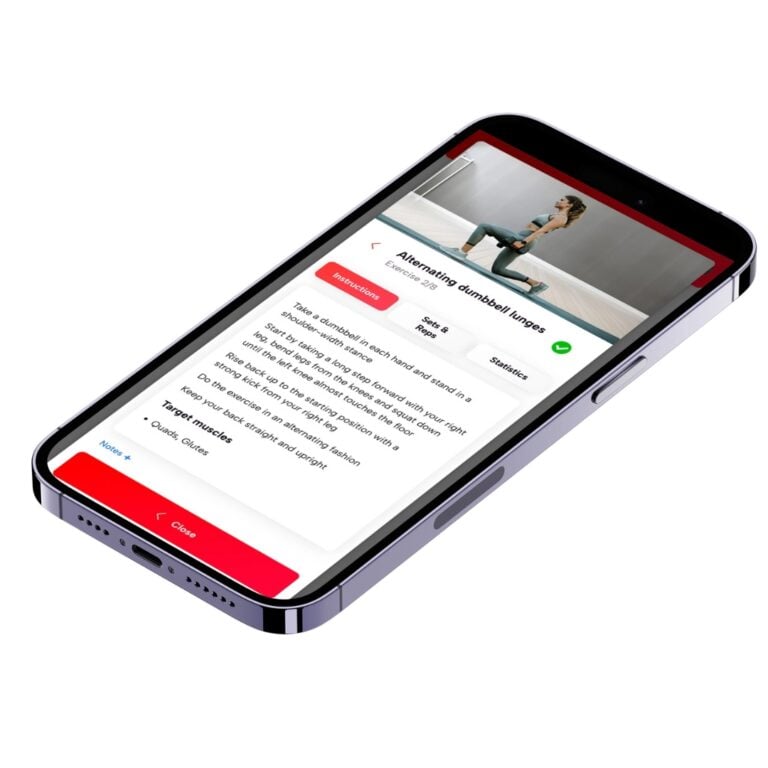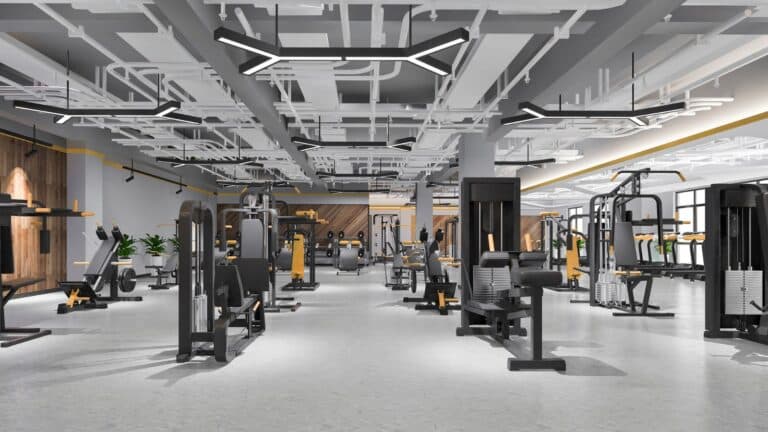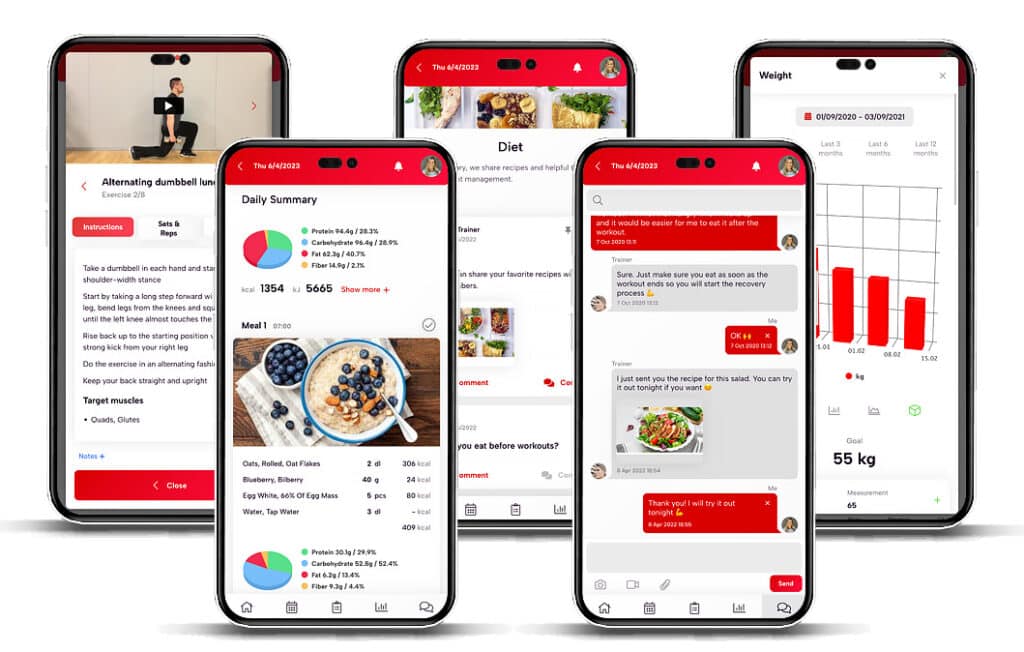If you’re running a gym or training business, you know the struggle – everyone’s searching online for their next fitness home, but how do you make sure they find your facility instead of the competition?
That’s where SEO (Search Engine Optimization) comes in, and here’s the good news: it’s not as complicated as it sounds.
Think of it as getting your gym to show up front and center when potential members are searching online. Whether they’re looking for “best gym near me” or “personal training in [your city],” you want to be right there at the top of those search results.
This guide will take you through exactly how to make that happen. You’ll discover everything from finding the perfect keywords (the actual words people use to search) to making your website shine in local searches. You’ll also learn how to track what’s working and what isn’t, so you can keep improving your online presence.
We created this guide for trainers and coaches to help them build stronger, more successful businesses—just as our platform is designed to elevate your training business. Let´s get started!
Keyword Research Basics
Let’s talk about the foundation of your SEO strategy: keyword research. Think of keywords as the bridge between what potential members are typing into Google and your gym’s website. Getting these right can make the difference between showing up on page one or getting lost in the depths of search results.
Start With the Basics
First, put yourself in your potential members’ shoes. What would they search for? Make a list of obvious terms like:
- “gym in [your city]”
- “fitness classes near me”
- “personal training [your location]”
- “weight loss programs [your area]”
But don’t stop there. Your competitors are already targeting these terms. You need to dig deeper.
Get Specific and Local
The real gold lies in long-tail keywords – those longer, more specific phrases that might get less traffic but bring in more qualified leads. For example:
- “24-hour gym with childcare in [your neighborhood]”
- “beginner-friendly CrossFit gym downtown”
- “women’s only fitness classes [your area]”
- “senior fitness programs near [local landmark]”
Use the Right Tools
You don’t have to guess what people are searching for. Free tools like Google’s Keyword Planner can show you exactly what potential members in your area are typing into search engines. Paid tools like SEMrush or Ahrefs can give you even more insights, including what keywords your competitors are ranking for.
Spy on Your Competition
Take a look at what other successful gyms in your area are doing. What keywords are they ranking for? Where are the gaps in their strategy? These gaps are your opportunities. Maybe they’re not targeting “early morning fitness classes” or “corporate wellness programs” – these could be your winning keywords.
Remember: Don’t fall into the trap of targeting every fitness-related keyword out there. Focus on terms that:
- Match your actual services
- Have reasonable search volume in your area
- Align with your target member profile
- Show clear intent to join or learn more about a gym
The key is to build a focused list of keywords that will attract the right kind of traffic – people who are actually looking to join a gym like yours.
Website Design and User Experience
Your gym’s or company´s website isn’t just a digital brochure – it’s your 24/7 sales team and virtual front desk rolled into one. Just like your facility needs both great equipment and friendly staff, your website needs both stellar design and smooth user experience to convert visitors into members.
Design That Converts
Think of your website design like your gym’s layout – every element should serve a purpose and guide visitors toward becoming members. Just as your gym floor plan creates an intuitive flow from one exercise area to another, your website design should create a natural journey from visitor to member.
Authentic Imagery That Resonates
Skip the generic stock photos of perfect models lifting weights. Instead, showcase real members who represent your gym’s community. If you’re a hardcore powerlifting gym, show serious lifters in action. If you’re focused on beginners, feature everyday people achieving their first fitness goals. This authenticity helps potential members picture themselves at your facility.
Clean, Focused Layout
Just as a cluttered gym floor creates confusion, a busy website design distracts from your message. Create clear visual hierarchies that guide visitors’ attention. Use whitespace effectively to let your content breathe, and break up text with relevant images and subheadings. Every element should earn its place on the page.
Social Proof Through Transformation Stories
Nothing sells like success. Feature before-and-after photos, member testimonials, and transformation stories prominently. But go beyond just physical changes – highlight emotional transformations too, like gained confidence or improved health. Make sure to get proper permissions and include specific details about their journey at your gym.
Professional Facility Showcase
Your gym is your product – show it off properly. Invest in professional photography that captures your facility at its best. Show equipment in use rather than just empty rooms. Include virtual tours that highlight unique features. Caption photos to point out specific amenities that set you apart from competitors. Remember to update these regularly as you upgrade your facility.
Essential Pages and Features
Every successful gym website needs:
- Homepage with clear value proposition
- Easy-to-find class schedules and booking
- Clear membership options and / or pricing
- About page featuring your team and facility
- Contact information accessible from every page
- Success stories and testimonials
- FAQ section addressing common concerns
- Virtual tours and facility showcase
- Staff and trainer profiles
Speed and Performance
Nobody likes waiting – whether it’s for equipment or web pages:
- Optimize all images and videos for fast loading
- Remove unnecessary plugins and scripts
- Use a content delivery network (CDN)
- Enable browser caching
- Regular speed testing and optimization
- Secure payment processing
- Integration with your gym management software
Mobile-First Experience
Over 70% of potential members will discover your gym on their smartphones. Your mobile experience isn’t just a feature – it’s your primary storefront. Here’s how to nail it:
Perfect Display
Your website should adapt seamlessly to every screen size. Text should be readable without zooming, and images should scale automatically. No horizontal scrolling, ever.
Touch-Friendly Navigation
Design for thumbs, not mouse clicks. Make buttons high enough, space them well apart, and place important actions within easy thumb reach. Your navigation menu should be clear and tap-friendly.
Quick Contact Options
Enable one-tap actions for phone calls, directions, and email. When someone’s ready to contact your gym, make it instant. Place your contact information where it’s easily accessible on every page.
Streamlined Forms
Keep mobile forms minimal. Ask only for essential information – nobody wants to type their life story on a phone. Auto-fill where possible, and use appropriate keyboard types for different fields.
Interactive Features
Make sure your maps, class schedules, and booking systems work flawlessly on mobile. If members can’t book a class easily on their phone, they might not book at all.
User-Friendly Navigation
Guide visitors like a personal trainer guides a workout:
- Create clear paths to important information
- Make the “Join Now” button visible everywhere
- Offer multiple contact options
- Place testimonials strategically near conversion points
- Include a search function for larger sites
- Keep menus simple and intuitive
Every moment of friction on your website is a potential member lost to the competition. Your website should make it ridiculously easy for visitors to take the next step, whether that’s booking a trial class, scheduling a tour, or signing up for membership. Test regularly with real users and keep optimizing – just like you’d adjust a training program based on results.
Website Optimization Tips
Now that you’ve got your keywords sorted, let’s make sure your website is actually ready to rank. Think of your website as your gym’s digital front desk – it needs to be just as welcoming and efficient as your actual facility.
Speed Is Your First Priority
Remember how quickly you click away from a slow-loading website? Your potential members feel the same way. A slow website is like having a line at the front desk with no staff to help. Here’s what you need to check:
- Are your images optimized? Those high-quality gym photos are great, but they need to be compressed
- Is your hosting up to par? A cheap hosting plan can cost you members in the long run
- Have you enabled caching? This helps your website load faster for returning visitors
Mobile-First Is Non-Negotiable
Pull out your phone right now and look at your gym’s website. How does it look? Over 60% of your potential members will find you on mobile devices, so your website needs to:
- Load perfectly on smartphones and tablets
- Have easy-to-tap buttons and menus
- Display your contact info prominently
- Show a clear “Join Now” or “Contact Us” button at all times
Structure Your Pages Like a Well-Organized Gym
Just like you wouldn’t put the free weights in the yoga studio, your website needs logical organization:
- Create clear navigation menus
- Group related content together (classes, membership options, trainers)
- Make sure every page is reachable in 3 clicks or less
- Include a search function for larger websites
The Technical Stuff That Makes a Difference
These might sound technical, but they’re crucial:
- Use descriptive URLs (yourgym.com/fitness-classes is better than yourgym.com/page2)
- Add alt text to images (helps with accessibility and SEO)
- Ensure your site has an SSL certificate (the little padlock in the browser)
- Create an XML sitemap to help search engines understand your website
Remember: your website needs to be as welcoming and functional as your actual gym. Every second a potential member spends frustrated with your website is another second they might spend checking out your competition.
Integration with your management software (check out this guide to the top personal trainer software options for 2024 to streamline your operations).
🚀 Tip:Build website and online store with trainero
With Trainero, setting up your own webpage and online store is effortless—it’s fast, optimized, and tailored for your needs. The built-in online store allows you to sell products, online courses, and services created through the Coach App. Manage your products and orders seamlessly using the CRM while customizing the design and content to reflect your brand. Say goodbye to complex integrations and enjoy an all-in-one solution. You can offer unlimited products, set one-time or recurring fees, automate payment reminders, and even use voucher codes. Plus, you can style your store and connect it to your own domain for a professional, cohesive look. Trainero simplifies your business so you can focus on what you do best—coaching. Learn more here.
Local SEO Strategies
Now, let’s get local – because that’s where your members are. Local SEO is your secret weapon for standing out in your neighborhood, and it’s absolutely crucial for fitness businesses. Think about it: when’s the last time someone drove two hours to go to a gym?
Own Your Google Business Profile
This is your digital storefront, and it’s completely free:
- Claim and verify your Google Business Profile (formerly Google My Business)
- Add tons of gym photos (both interior and exterior)
- Keep your hours, phone number, and address 100% accurate
- Respond to every review – good or bad
- Post updates about classes, events, and promotions regularly
Get Those Reviews Rolling
Reviews are like word-of-mouth marketing on steroids (the legal kind!):
- Create a simple system to ask happy members for reviews
- Make it easy by sending direct review links
- Respond to every review within 24 hours if possible
- Address negative reviews professionally and take the conversation offline
- Never, ever buy fake reviews – Google knows, and it’s not worth the risk
Build Local Connections Online
Your community presence matters in the digital world too:
- Get listed in local business directories
- Join your Chamber of Commerce (and get listed on their website)
- Partner with local businesses for cross-promotion
- Sponsor local events and make sure they link to your website
- Create content about local fitness events and competitions
NAP Consistency Is Key
NAP (Name, Address, Phone Number) needs to be identical everywhere online:
- Your website
- Google Business Profile
- Social media profiles
- Business directories
- Review sites
- Local business listings
Even small differences like “Street” vs “St.” can hurt your local SEO. Think of it as your gym’s digital fingerprint – it needs to be consistent everywhere.
Content Creation Guide
Creating killer content for your gym isn’t just about selling memberships – it’s about establishing your expertise and keeping your website fresh. Think of your content as your gym’s digital personal trainer: it should educate, motivate, and guide potential members toward their fitness goals.
Blog Posts That Actually Get Read
Your blog is your gym’s digital magazine – it should educate, inspire, and convert. Here’s how to create content that keeps potential members coming back:
Problem-Solving Content
Focus on real issues your members face. Write about overcoming gym anxiety, fitting workouts into busy schedules, or proper form for common exercises. Each post should offer clear, actionable solutions that readers can implement immediately.
Success Stories That Inspire
Transform your best member results into compelling narratives. Include clear before/after photos, detailed timelines, and specific workout strategies they used. Always get written permission, and include quotes about their journey. These stories are your most powerful conversion tools.
Simplified Fitness Education
Break down complex topics like nutrition, progressive overload, or recovery into bite-sized, beginner-friendly chunks. Use analogies, infographics, and real-world examples. Remember: confused readers don’t become members.
Practical Workout Tips
Create content that provides immediate value. Share quick workout routines, form tips, or exercise modifications. Include clear instructions and, when possible, video demonstrations. Make your expertise obvious but accessible.
Myth-Busting Articles
Address common fitness misconceptions head-on. Use scientific research and real-world experience to debunk myths about spot reduction, muscle building, or weight loss. Position your gym as a source of reliable fitness information.
Mix Up Your Content Types
Different members consume content differently, so vary your approach:
- How-to videos showing proper exercise form
- Quick-read workout tips for busy professionals
- In-depth guides about nutrition and training
- Member transformation stories
- Expert interviews with your trainers
- Virtual gym tours
- Class spotlights and previews
Make It Local and Personal
Your gym isn’t just a business – it’s a vital part of your community. Here’s how to showcase your local connection:
Local Event Coverage
Become the go-to source for fitness events in your area. Preview upcoming races, review past events, and share training tips specific to local challenges. Feature member stories from these events to inspire participation.
Neighborhood Health Scene
Create a curated guide to healthy living in your area. Partner with local healthy restaurants, supplement shops, and wellness providers. Share insider tips about nearby running trails, parks, and active meetups.
Weather-Smart Workouts
Help members adapt to your local climate. Create summer workout guides for brutal heat, or indoor alternatives for rainy seasons. Share tips for staying motivated during your region’s unique weather challenges.
Community Impact
Document your gym’s role in local causes. Share stories from charity events, highlight member-led community initiatives, and showcase how your facility gives back. Make it clear that joining your gym means joining a community that cares.
Team Spotlight
Turn your staff into local fitness celebrities. Share their specialties, certifications, and personal fitness journeys. Include their favorite local workout spots and healthy eating tips. Help potential members connect with your team before they even visit.
SEO-Smart Content Creation
Make sure search engines love your content as much as your readers:
- Include your target keywords naturally (don’t force them)
- Use descriptive headers (H1, H2, H3) to organize content
- Add alt text to all images
- Link to other relevant content on your site
- Keep content fresh with regular updates
Remember: Quality beats quantity every time. One great, helpful article is worth more than ten rushed, generic posts. Focus on creating content that actually helps your target members solve their fitness challenges.
Search Engine Rankings
Getting your gym to rank higher in search results isn’t about gaming the system – it’s about proving to search engines that you’re the best answer to local fitness searches.
Let’s break down how to climb those rankings like you’d progress through a workout program.
Focus on What Actually Matters
Search engines look at specific signals to determine rankings:
- Relevant, high-quality content that answers searcher questions
- Mobile-friendly website with fast loading times
- Quality backlinks from reputable local sources
- Consistent NAP (Name, Address, Phone) information
- Positive reviews and ratings
- Regular website updates and fresh content
Build Authority in Your Local Fitness Space
Position your gym as the go-to fitness expert in your community. Here’s how to establish and maintain that authority:
Expert Content Creation
Develop comprehensive guides on specific fitness niches. Whether it’s marathon training tips for your city’s upcoming race or nutrition advice for local athletes, create content that showcases your deep expertise. Focus on topics where your gym excels and that resonate with your local audience.
Local Media Presence
Build relationships with local journalists and bloggers. Offer expert commentary on fitness trends, share success stories, or provide seasonal health tips. Create newsworthy events at your gym that local media will want to cover. Remember: every mention builds credibility.
Professional Partnerships
Team up with local healthcare providers, physical therapists, and nutritionists. Create collaborative content that addresses the full spectrum of wellness. Host joint workshops or seminars that bring value to your community while expanding your network.
Community Engagement
Actively participate in local online fitness discussions. Answer questions on neighborhood forums, engage in local social media groups, and share valuable advice. Position your trainers as accessible experts who genuinely care about the community’s fitness goals.
Signature Events
Create unique fitness events that become local traditions. Whether it’s a quarterly fitness challenge or an annual charity workout, make your gym synonymous with community wellness. Document these events thoroughly and share the content across all platforms.
Technical Optimization That Counts
Some technical aspects directly impact your rankings:
- Secure your site with HTTPS
- Create a logical site structure
- Optimize your URLs for readability
- Use proper header tags (H1, H2, H3)
- Include location-specific keywords naturally
- Create unique meta descriptions for each page
Track Your Progress
Monitor your rankings like you’d track fitness goals:
- Use Google Search Console to monitor performance
- Track your position for key local search terms
- Monitor competitor rankings
- Analyze which content performs best
- Keep an eye on your backlink profile
Rankings aren’t built overnight, just like you can’t get fit in a day. Stay consistent with your SEO efforts, and you’ll see steady improvements in your search visibility over time.
Fitness SEO Techniques
Now let’s get into some fitness-specific SEO strategies that will help your gym stand out in the digital space. These aren’t just generic SEO tips – they’re tailored specifically for fitness businesses like yours.
Leverage Your Unique Selling Points
What makes your gym different matters. Here’s how to showcase your unique advantages and turn them into member magnets:
Specialized Program Pages
Create dedicated landing pages for each of your signature offerings. Whether it’s your HIIT classes, yoga studio, or personal training programs, detail the unique benefits, schedule options, and expected results. Include clear calls-to-action and trial offers specific to each program.
Standout Facilities
Highlight the equipment and amenities that set you apart. Maybe you have a boxing ring, specialized CrossFit equipment, or a recovery room. Show these features in action, explain their benefits, and emphasize how they support member goals.
Expert Training Team
Your trainers are your secret weapon. Showcase their certifications, specialties, and success stories. Create individual trainer profiles that highlight their unique approaches and the results they’ve achieved with members. Let their personalities shine through.
Real Results Gallery
Build a compelling collection of member transformations. Go beyond before-and-after photos – share their complete journeys, including specific programs they followed, challenges they overcame, and how your gym supported their success.
Community Culture
What’s the vibe at your gym? Whether you’re hardcore strength-focused or beginner-friendly, own your identity. Share stories and photos that capture your gym’s atmosphere, member interactions, and community events. Help prospects feel like they belong before they join.
Use Fitness-Specific Keywords
StrategicallyTarget terms that fitness-minded people actually use:
- Exercise-specific terms (“CrossFit box near me,” “powerlifting gym”)
- Fitness goals (“weight loss gym,” “strength training classes”)
- Equipment-related searches (“gym with swimming pool,” “boxing ring”)
- Program-specific terms (“beginner yoga classes,” “senior fitness programs”)
- Seasonal keywords (“summer body workout,” “new year fitness programs”)
Create Content That Converts
Focus on content that drives membership:
- Free workout plans (in exchange for email addresses)
- Nutrition guides and meal prep tips
- Form demonstration videos
- Before and after success stories
- Class previews and virtual tours
Build Industry Authority
Establish your gym as more than just a workout space – make it a cornerstone of the local fitness community. Here’s how to build lasting industry authority:
Strategic Sports Partnerships
Connect with local sports teams and athletic programs. Offer specialized training sessions, recovery workshops, or nutrition seminars. Document these partnerships through content that showcases your gym’s role in developing local athletes.
Health Professional Network
Build relationships with physical therapists, nutritionists, and medical professionals. Create a referral network that positions your gym as part of the local healthcare ecosystem. Host joint educational events that bridge fitness and wellness.
Educational Leadership
Transform your gym into a learning hub. Organize regular workshops on form technique, nutrition basics, or injury prevention. Record these sessions for content, and create downloadable resources that extend your expertise beyond your walls.
Influencer Collaborations
Partner with local fitness personalities who align with your gym’s values. Create joint workout challenges, special events, or content series. Focus on authentic partnerships that bring real value to your community, not just social media buzz.
Trend Analysis & Commentary
Stay ahead of fitness trends and provide expert perspective. Share informed opinions on new workout methods, equipment, or training approaches. Help your audience separate fitness facts from fads through well-researched content.
The fitness industry is highly competitive, but also highly personal. Your SEO strategy should reflect both your expertise and your gym’s unique personality. Focus on what makes your facility special, and make sure that comes through in all your online content.
Final Thoughts
Implementing SEO for your fitness gym isn’t a one-time workout – it’s a long-term commitment to your business’s digital health. Just like you tell your members that sustainable fitness is about consistency, not quick fixes, the same applies to your gym’s online presence.
Key Takeaways to Remember:
- Start with solid keyword research focused on local fitness searches
- Build a fast, mobile-friendly website that converts visitors into members
- Create engaging content that showcases your gym’s unique value
- Optimize for local searches to attract nearby fitness enthusiasts
- Monitor your performance and adjust your strategy accordingly
Your Next Steps:
- Audit your current website and identify quick wins
- Set up or optimize your Google Business Profile
- Start creating regular, valuable content for your audience
- Build a consistent review collection system
- Track your rankings and adjust your strategy as needed
The digital fitness space gets more competitive every day. But by implementing these SEO strategies consistently, you’re not just competing – you’re building a strong, sustainable online presence that will continue to attract new members to your gym.
Stay committed to your SEO strategy like you stay committed to your members’ fitness goals. The results will follow.
Ready to Take Your Gym’s Digital Presence to the Next Level?
While implementing these SEO strategies is crucial, having the right tools to manage your gym’s operations is equally important.
Trainero offers a comprehensive solution that helps you streamline your gym management while supporting your digital growth. From member management to class scheduling, and integrated marketing tools – it’s designed specifically for fitness businesses like yours.
Want to see how Trainero can help your gym grow? Start your free trial today and experience the difference the right software can make in your gym’s success.

